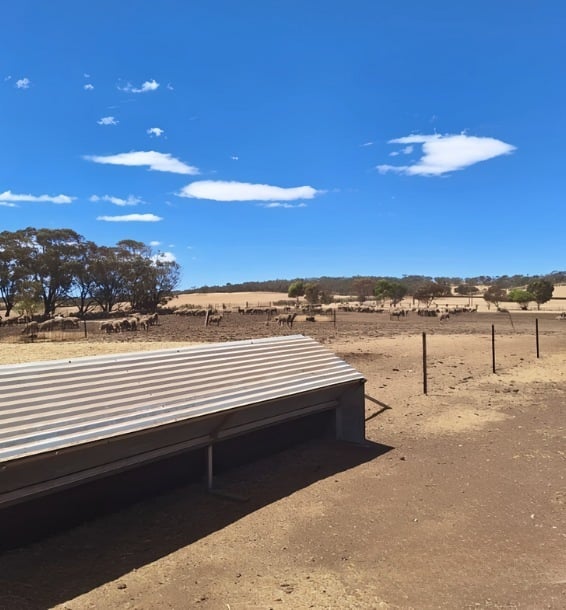Containment feeding: Managing the exit to maximise pasture recovery
Focused on pasture recovery, this blog explores how to make smart, timely decisions when exiting containment feeding systems.

Key messages
- Exiting containment at the right time boosts pasture recovery.
- Leaf stage, not green colour, should guide your exit.
- Containment feeding is a strategic tool, not just a drought fix.
Containment feeding is widely used across the Riverine Plains this winter, not just to maintain livestock condition, but as a powerful tool to protect and recover pastures. When used strategically, SCAs allow producers to completely rest paddocks during periods of limited pasture growth, such as dry, wet, or cold spells. This rest period gives plants time to rebuild energy reserves and return to active growth.
While entering containment is often a clear decision (when feed demand exceeds supply), knowing when to exit is more complex, and more critical. This post focuses on the principle-based approach to exiting containment feeding, with a goal to maximise pasture production and grazing flexibility later in the season.
Why containment matters for pasture systems
Containment feeding isn't just about animal welfare; it's about maximising recovery across the farm. When animals are fully removed from paddocks, the result is:- Better soil protection and reduced erosion risk
- Faster and more even pasture recovery
- Improved pasture utilisation later, as plants have replenished reserves
- More stable livestock performance, through controlled rations and monitoring
The challenge: when to exit containment?
Two of the biggest challenges in using SCAs effectively are:
- When to enter
- When to exit
While prescriptive rules (e.g. set groundcover targets) can be helpful, a principle-based approach grounded in pasture physiology is more adaptable to each farm.
A principle-based approach to exiting containment
Understanding plant rest and regrowth is key. Here's how to apply that thinking in practice:
- Know your dominant pasture species
Different species have different growth patterns and recovery needs. Identify what you’re working with e.g. annual ryegrass, phalaris, clover mix, etc. - Understand your pasture leaf stage is your best guide
- Grazing too early - stock will eat lower leaves off preventing regrowth and if water and temperature are still limiting growth, plant will struggle to recover
- Feed quality is also linked to leaf stage (e.g. 2.5-3 leaf is optimal nutritional value for ryegrass)
- Grazing too late - Each species has a maximum leaf stage (e.g. 4-leaf stage for ryegrass) after this the first leaf will die & wastage occurs
- Factor in stocking rate and expected growth
Where you set your exit point also depends on:- The stocking rate you’ll apply after exit
- The growth rate needed to sustain the rotation
- Upcoming seasonal conditions, risk and opportunity
Don't wait until there's no feed left
Containment isn’t just a drought response. It’s a pasture management tool. Removing stock from pasture when your minimum acceptable level is reached:
- Preserves plant energy as they enter dormancy in lower temperatures or under moisture stress
- Gives pastures a true rest
- Avoids overgrazing and recovery delays
Final thoughts
Well-managed containment feeding extends the rest period of your paddocks, helping pastures bounce back stronger and faster. But exiting at the right time is what determines whether you just protected your soil or actually reset your pasture system.If you're already using containment this season, now’s the time to start assessing your pasture condition and planning your exit based on plant stage.
Need support with feed planning or pasture assessment?
Visit:
Want to explore how producers are adopting SCAs across Victoria?
Download the investment case and consultation report here, developed as part of the FDF pilot by Riverine Plains.
This blog is part of the project’s extension work, led by Riverine Plains through the Victoria Drought Resilience Adoption and Innovation Hub, with funding from the Australian Government’s Future Drought Fund.
Author
Sayra Samudio
Sustainable Practices & Farmer Engagement Manager Bachelor of Agricultural Engineering Master of Agricultural Sciences
15 July 2025
NEWS
Keep up to date with what's happening across the Riverine Plains.
-
Livestock
-
People
-
Grains
-
Sustainability

